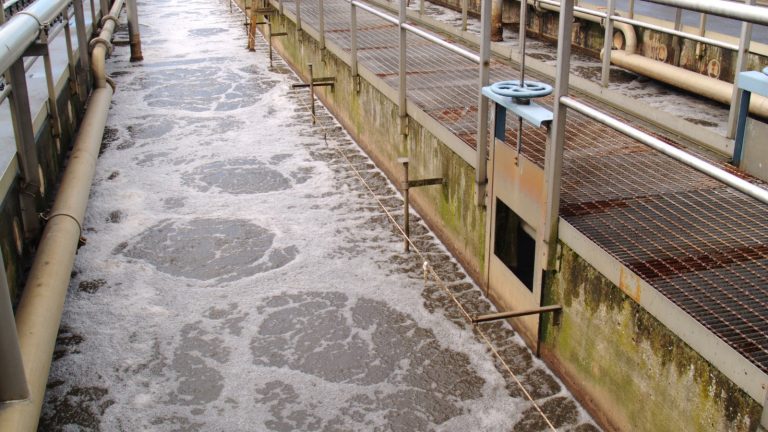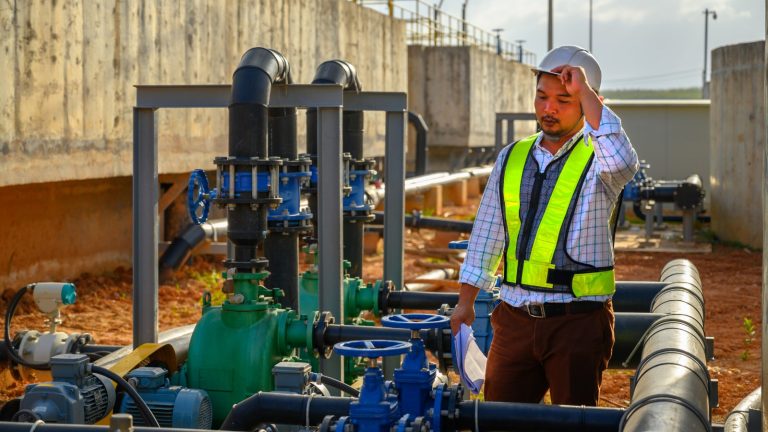Did you know that Sewage sludge is the leftover, semi-solid substance that is left over after treating industrial or municipal wastewater? Yes, it is true that these are by-products of the main sewage treatment. This wastewater treatment process ensures that the water people use for their household and industrial purposes is treated well and transformed into eco-friendly products before releasing them into the environment. There are various sewage treatment methods to treat sewage sludge, yet the fastest and the most effective method is known as the ‘activated sludge process’.With this method, the wastewater sludge can be safely and effectively treated before it is discharged into the environment.
In this article, we are going to explore the benefits of these activated sludge sewage treatments and how the wastewater industry in Australia can benefit from them.
We will explore
What is Activated Sludge in the Wastewater Industry?

- First, we should understand what exactly this is. Activated sludge is a biological wastewater treatment process where microorganisms are used to break down organic matter.
- In this process, wastewater is mixed with a culture of microorganisms in aeration tanks. Oxygen is continuously pumped into the aeration tanks to facilitate sludge bacteria growth and metabolism. The microorganisms consume organic pollutants present in the wastewater as their food source, which helps reduce its organic content.
- As the microorganisms grow, they form a dense suspension known as activated sludge in the sludge tank. This sludge is then separated from the treated wastewater through settling tanks.
- Some of the activated sludge is recycled back into the aeration tanks to maintain the microbial population, while the excess sludge is either disposed of or processed further.
- Activated sludge treatment is effective in removing organic pollutants and nutrients from wastewater, making it a widely used method in municipal and industrial wastewater treatment plants.
Top 6 Benefits of Activated Sludge

Speed and Efficiency
Speed and efficiency are key benefits of activated sludge in wastewater treatment. Through the activity of microorganisms, activated sludge processes rapidly degrade organic pollutants. This act encourages a swift purification of wastewater. This is why it is known as the most beneficial activated sludge process wastewater treatment.
The continuous aeration in the treatment tanks accelerates microbial metabolism, leading to a quicker breakdown of organic matter.
Plus, the activated sludge’s high surface area-to-volume ratio allows effective interaction between microorganisms and contaminants, which enhances the treatment process.
As you can see, considering the speed and efficiency, its rapid and efficient removal of contaminants makes activated sludge an attractive choice for wastewater treatment. This is very effective for wastewater treatment plants situated in densely populated areas or industrial settings with high wastewater loads.
Short Span Treatment Cycle
We usually see the sewage treatment processes with expanded time. But this one is different for sure. That is because it only takes around two hours for the entire treatment cycle to be completed.
This process allows for a relatively quick turnover of wastewater, from entry into the treatment system to its release as treated effluent.
By utilising highly active microorganisms and maintaining optimal conditions such as aeration and nutrient levels, activated sludge systems efficiently degrade organic pollutants within a short time frame.
This rapid treatment cycle ensures that wastewater can be processed swiftly, reducing the retention time within treatment facilities.
It also ensures sewage is processed within the predefined time frame and it reduces the ordour issues and possible environmental contamination.
Fewer Odour
This is exactly what we mentioned in the above section. Among many other activated sludge process wastewater treatments, this one has gained popularity due to this reason.
The reduction in odours emitted during the process. The aerobic conditions maintained in the aeration tanks promote the growth of aerobic microorganisms, which efficiently degrade organic pollutants while minimising the production of foul-smelling compounds typically associated with anaerobic decomposition.
Additionally, the continuous mixing and aeration in the treatment tanks help to prevent the accumulation of stagnant areas where odour-producing bacteria could thrive.
This results in a more pleasant working environment for operators and surrounding communities near treatment facilities.
Activated sludge systems help to enhance air quality and public satisfaction with wastewater treatment operations by reducing odours.
Pharmaceuticals and Antibiotics as Side Effects
An unexpected yet beneficial outcome of activated sludge treatment in wastewater is the incidental production of pharmaceuticals and antibiotics for sure.
This is how it occurs. During the treatment process, various organic compounds, including pharmaceutical residues, are introduced into the system.
The diverse microbial community within activated sludge has the capability to biodegrade these compounds. As a result, some microorganisms have the ability to produce metabolites that resemble or even similar to pharmaceuticals or antibiotics.
Though these metabolites are not intentionally manufactured, their presence highlights the potential of activated sludge systems to serve as bioreactors for valuable compounds.
Since it can demonstrate the adaptability and possible uses of activated sludge treatment beyond traditional wastewater purification, this accidental creation opens up new possibilities for resource recovery and pharmaceutical synthesis.
Requirement of Fewer Pump-Outs
You know that many other sewage treatment processes have unlimited demands like pump-outs. However, this is different when it comes to the activated sludge process. Let us explain how.
If you look at the requirements of this treatment process, an advantageous aspect of activated sludge treatment in wastewater is the reduced frequency of pump-outs required.
You know that the efficient removal of organic matter by the microorganisms in the aeration tanks leads to the formation of dense, settleable sludge.
This activated sludge separates from the treated water in the clarifiers efficiently because it settles easily. As a result of this, compared to other techniques, there is less buildup of solid waste in the treatment system, which lessens the requirement for regular pump-outs or maintenance.
Why is this beneficial? If you inspect the operational costs a wastewater treatment plant has to bear, you can see the amount is a bit higher. If the treatment plant opts for an activated sludge process, it helps the authorities to stay away from the burden of unwanted costs.
This paves the way for lower operational costs, as well as decreased downtime associated with equipment maintenance. This contributes to the overall efficiency and cost-effectiveness of activated sludge wastewater treatment plants.
Easy to Operate and Maintain
If you think activated sludge sewage treatment is a bit complicated, yes it is true!
However, compared to the other processes this is quite straightforward and has the ability to handle a large volume of sewage.
Activated sludge systems offer a top benefit in their ease of operation and maintenance. The process involves straightforward procedures as we mentioned, such as adjusting aeration rates and monitoring nutrient levels, which can be easily managed by trained operators.
The robust microbial community within the system helps maintain stability, reducing the need for constant intervention. Regular maintenance chores are usually not consuming time and involve little downtime, such as sludge waste and routine machine inspections.
Also, the adaptability of activated sludge systems offers operational flexibility through the ability to adapt to changing influential characteristics and treatment objectives.
This simplicity in operation and maintenance not only reduces labour and training costs but also ensures consistent and reliable performance of the entire wastewater treatment plant.
Save Money and Time through Activated Sludge Treatment

As you can see, any by-product can be treated well and transformed into useful items if the right strategies are involved. Activated Sludge is a convenient way for wastewater treatment plants to process it while saving money, and time and enhancing the entire operational background. However, this effort can be simplified and expedited if you opt for the right technologies from a reputed partner.







